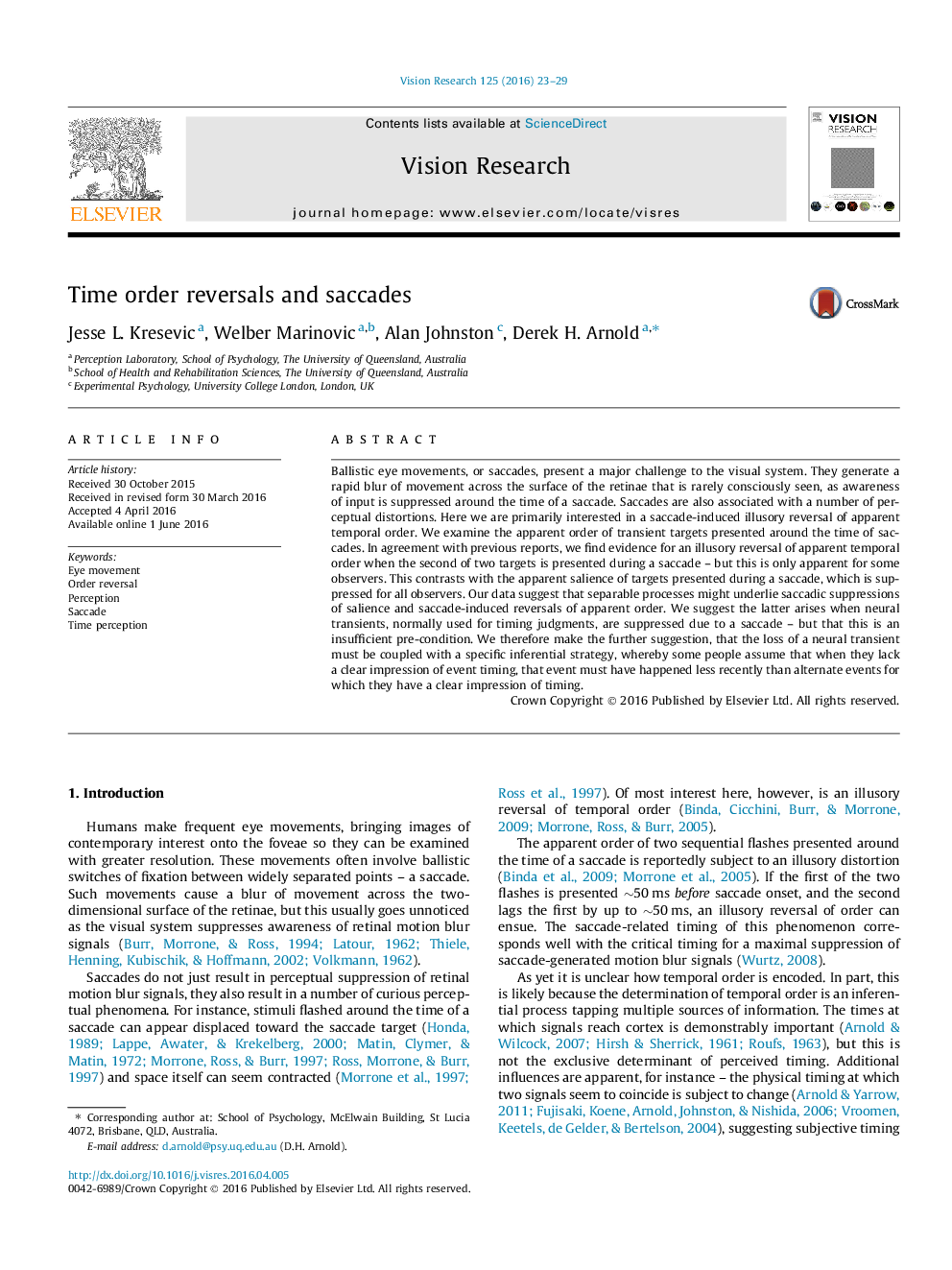| Article ID | Journal | Published Year | Pages | File Type |
|---|---|---|---|---|
| 6202996 | Vision Research | 2016 | 7 Pages |
Ballistic eye movements, or saccades, present a major challenge to the visual system. They generate a rapid blur of movement across the surface of the retinae that is rarely consciously seen, as awareness of input is suppressed around the time of a saccade. Saccades are also associated with a number of perceptual distortions. Here we are primarily interested in a saccade-induced illusory reversal of apparent temporal order. We examine the apparent order of transient targets presented around the time of saccades. In agreement with previous reports, we find evidence for an illusory reversal of apparent temporal order when the second of two targets is presented during a saccade - but this is only apparent for some observers. This contrasts with the apparent salience of targets presented during a saccade, which is suppressed for all observers. Our data suggest that separable processes might underlie saccadic suppressions of salience and saccade-induced reversals of apparent order. We suggest the latter arises when neural transients, normally used for timing judgments, are suppressed due to a saccade - but that this is an insufficient pre-condition. We therefore make the further suggestion, that the loss of a neural transient must be coupled with a specific inferential strategy, whereby some people assume that when they lack a clear impression of event timing, that event must have happened less recently than alternate events for which they have a clear impression of timing.
